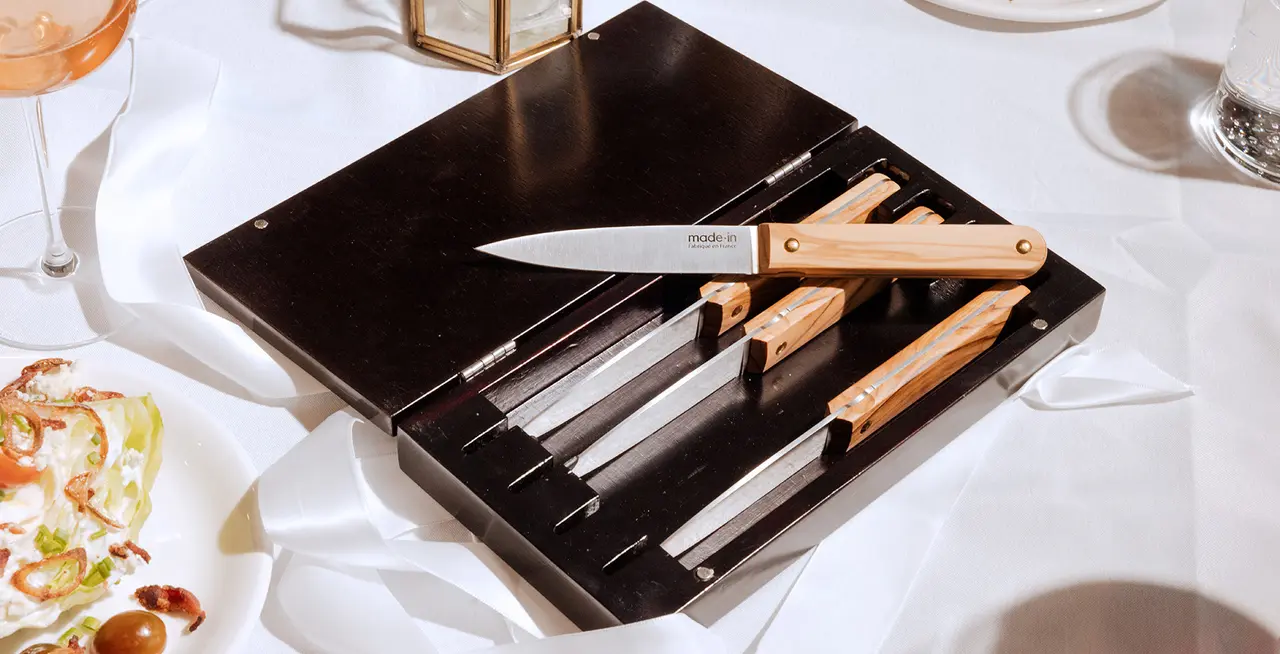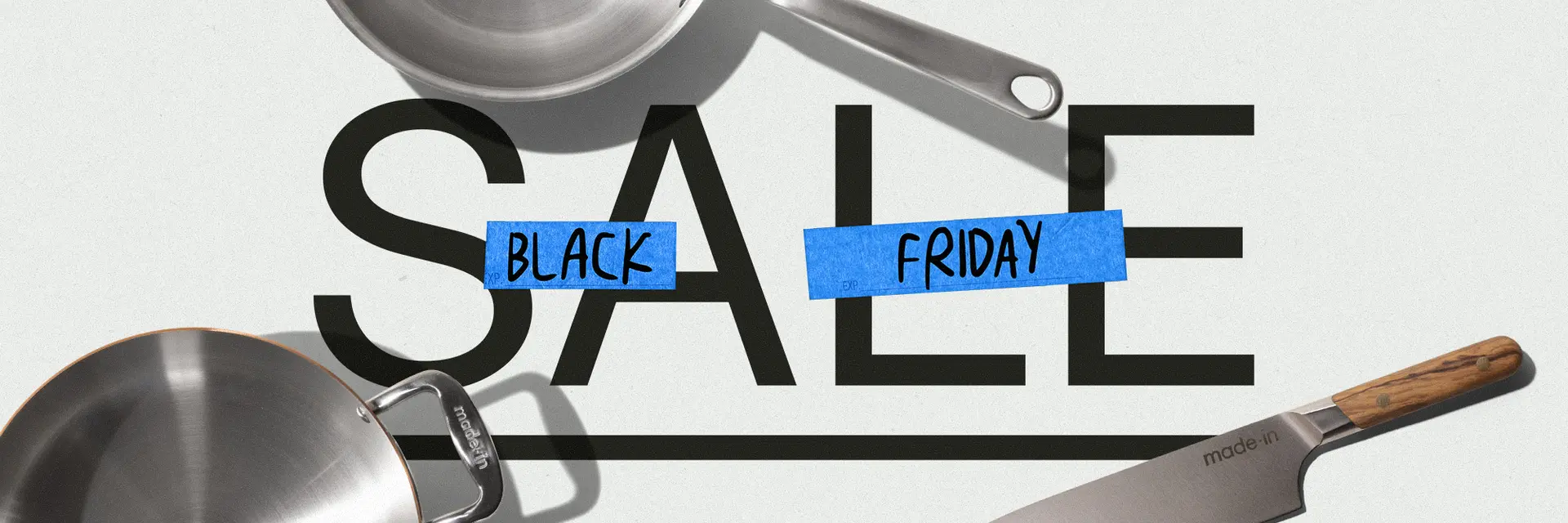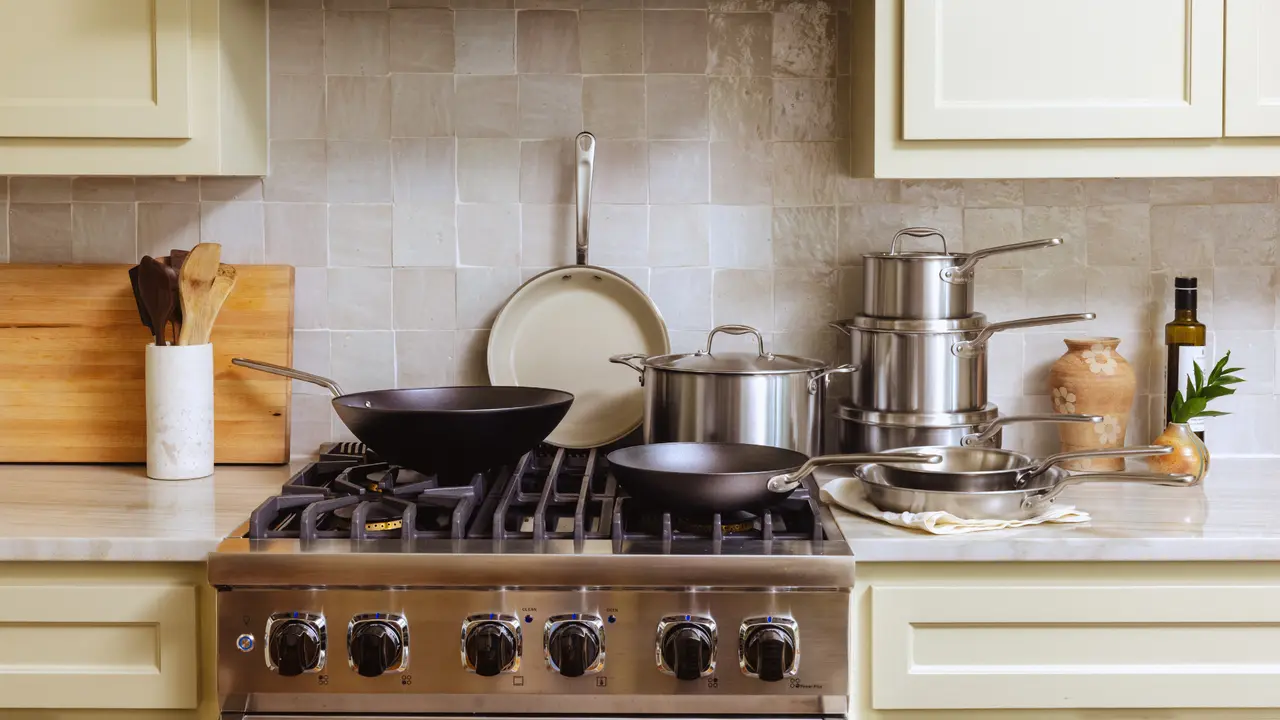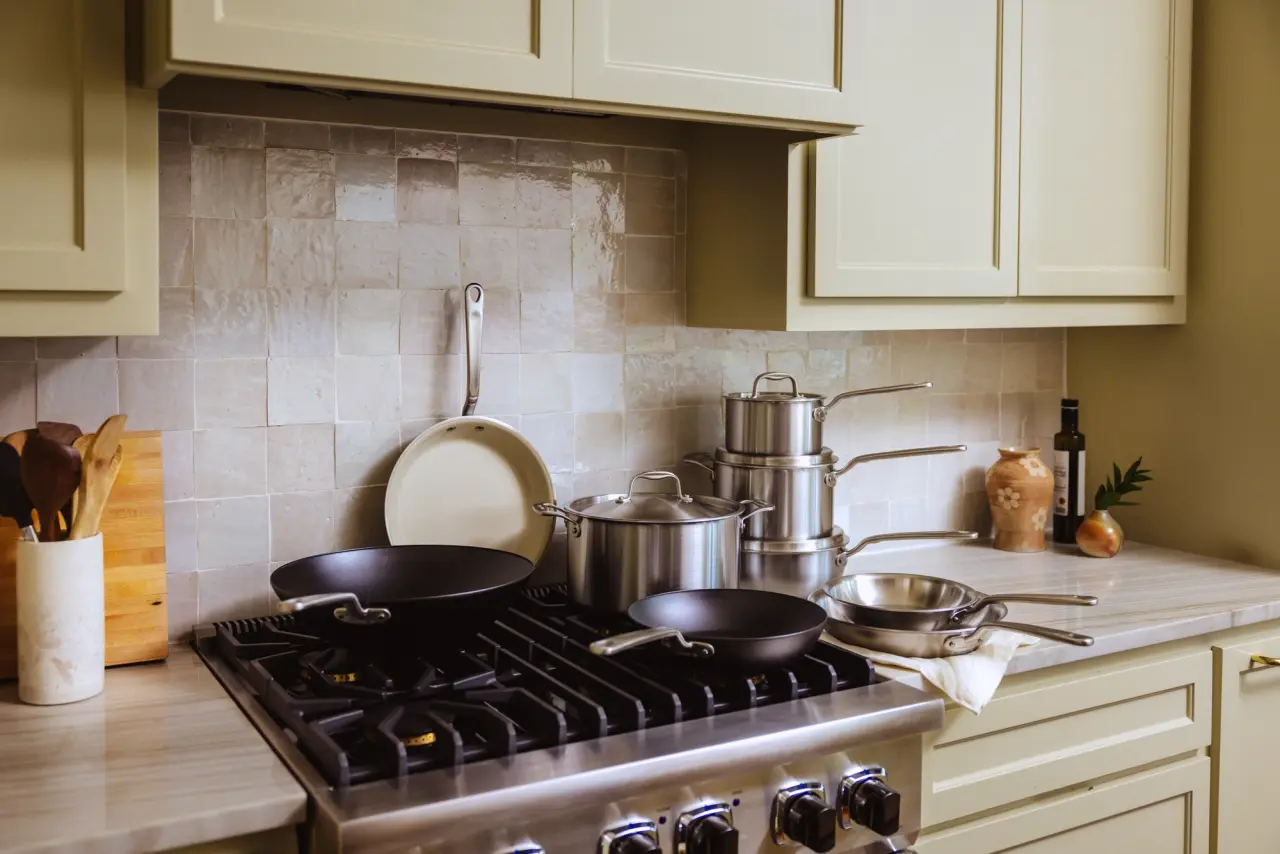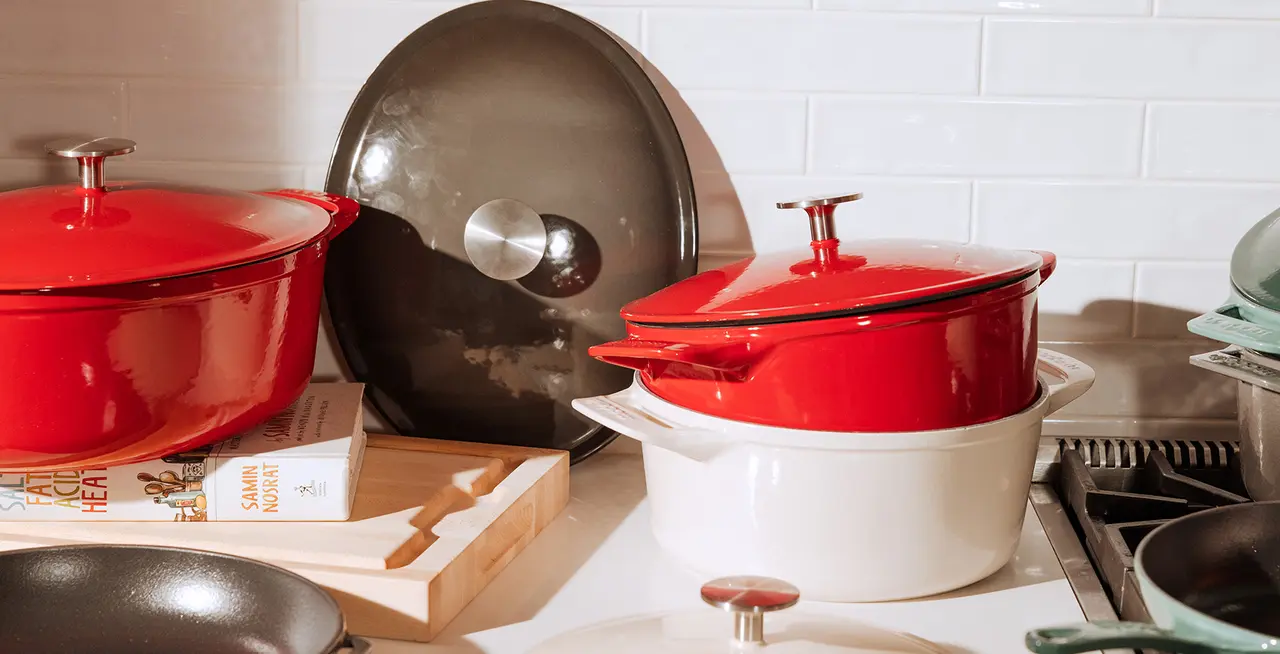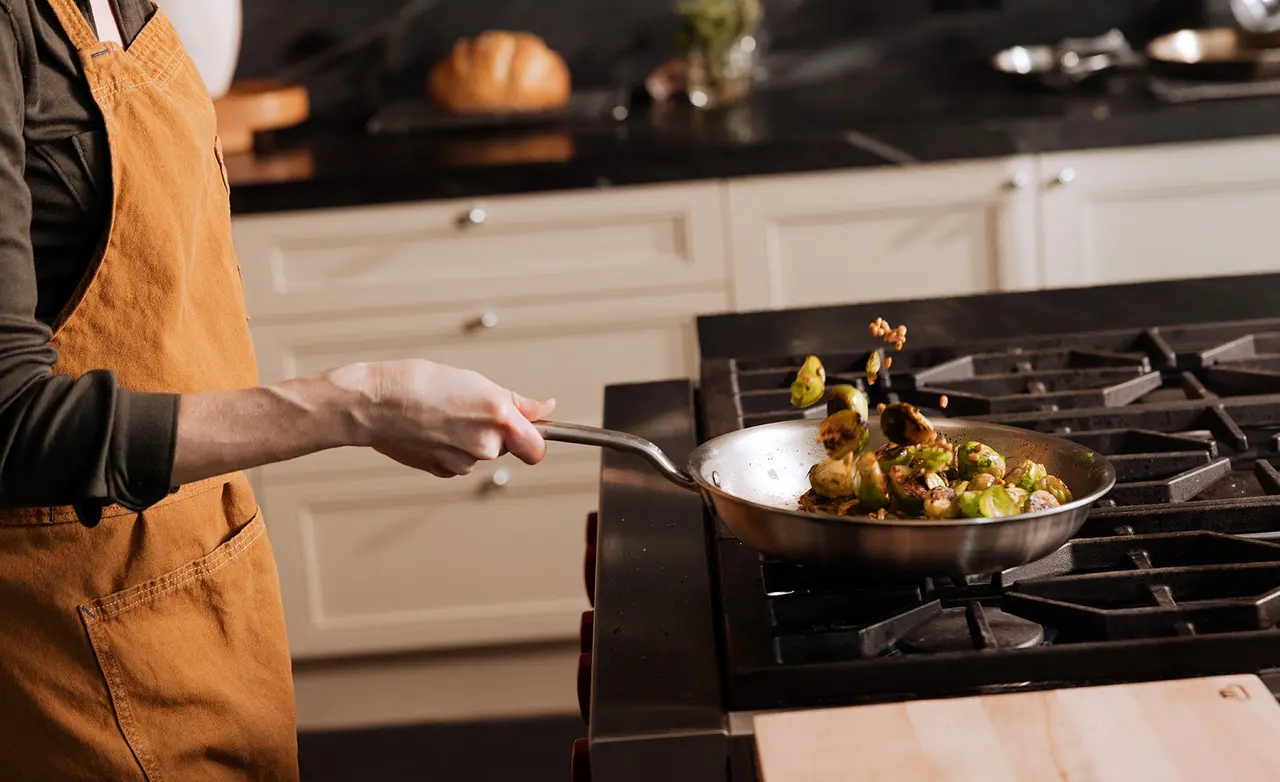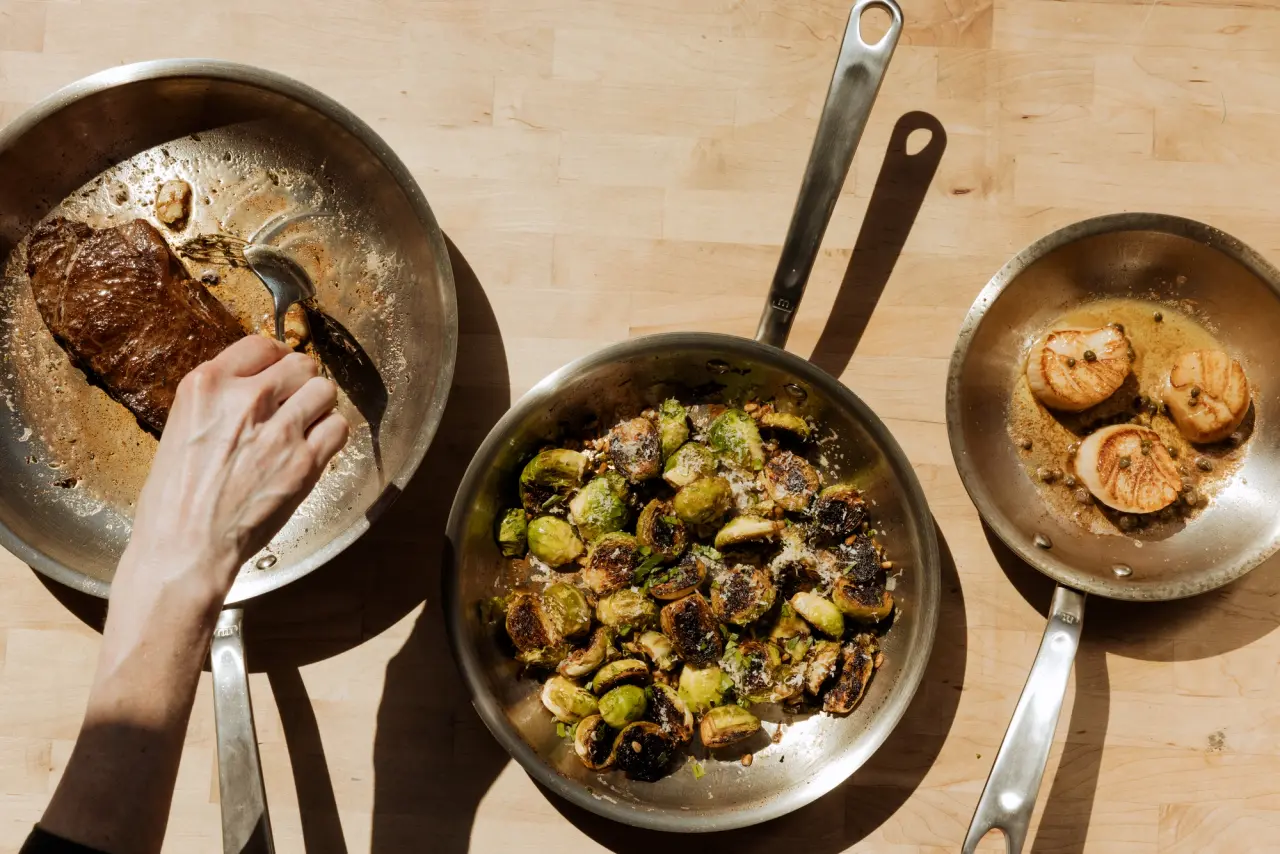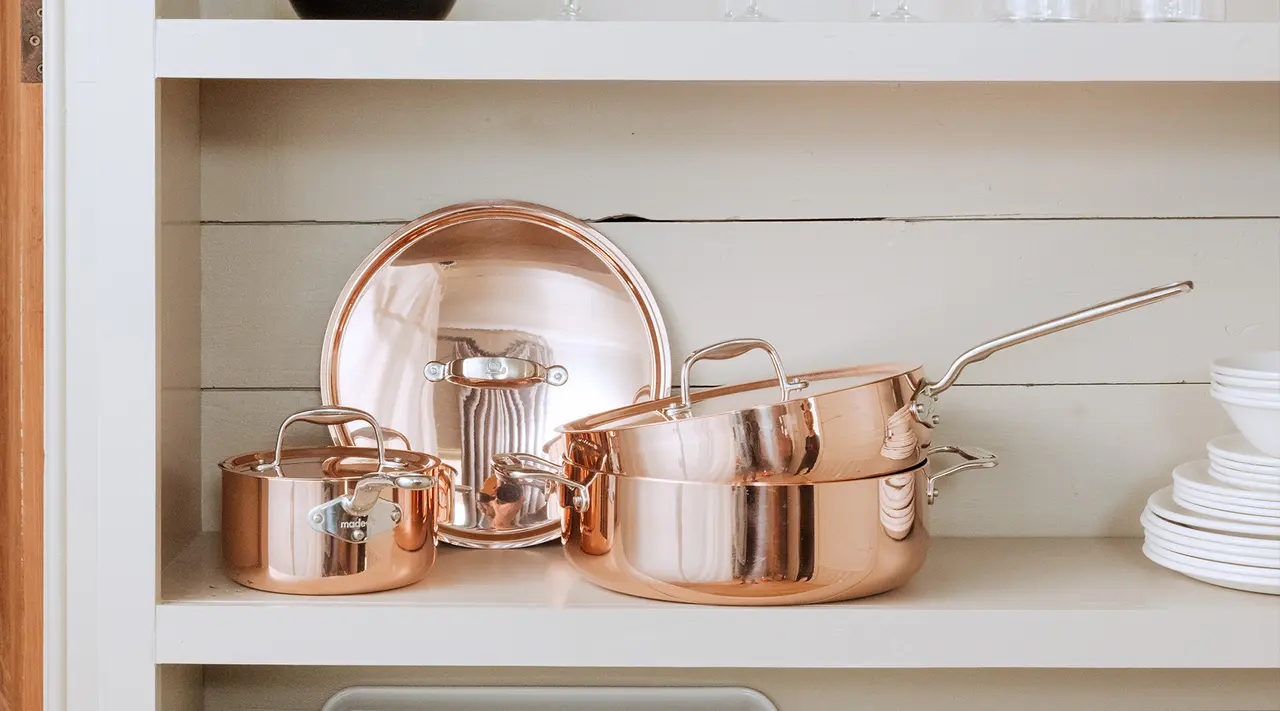If you’ve ever tried to serve steaks with standard table or butter knives, you know that they’re just not up for the task. Enter the steak knife: slightly more heft, an exponentially sharper blade, and—if you choose wisely—a beautiful, balanced design.
With the staggering range of steak knives available, you’ll want to do some research before you committing to a new set. Here, we’ve given you all the information you need on the different blade styles and materials to look for in a steak knife, as well as how much you can expect to spend.
What are the Different Types of Steak Knives?
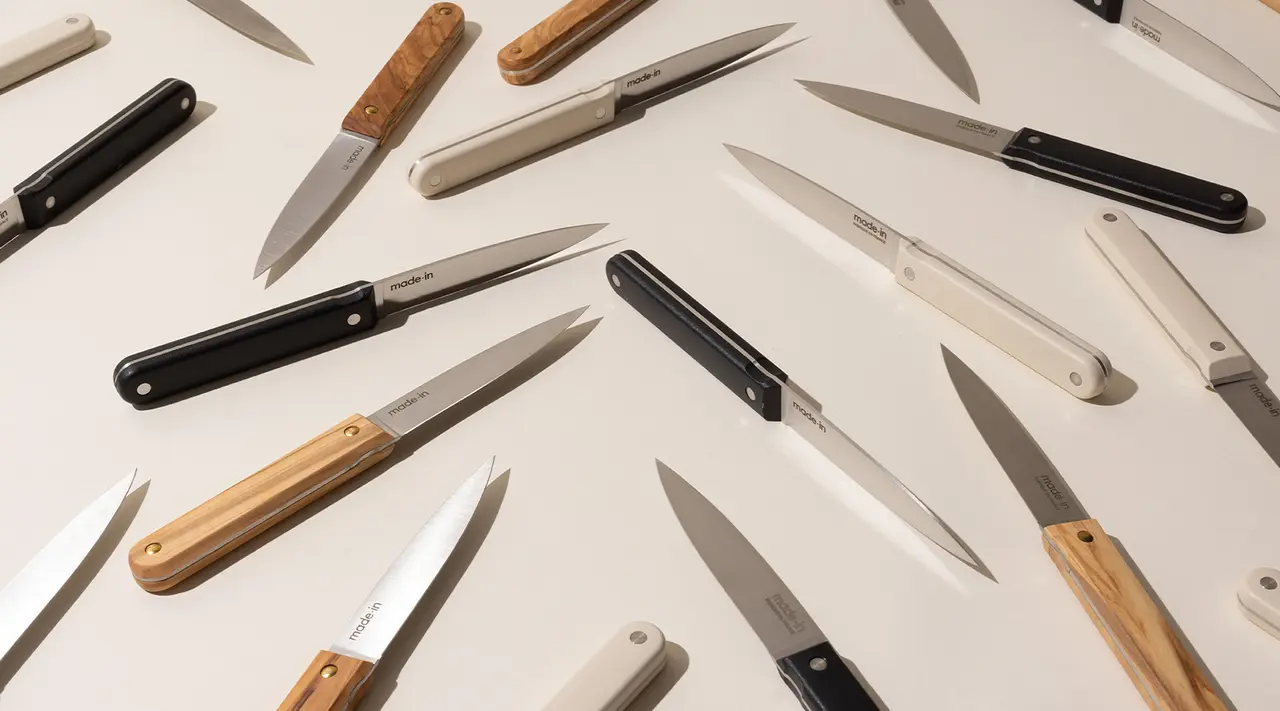
Often resembling a small chef knife or elongated paring knife, steak knives are meant to be wielded tableside by individual diners. They should feel sturdy and balanced with a carefully honed, sharp edge. They typically fall into one of two categories: serrated or non-serrated (also referred to as “straight”).
Straight
The preferred blade of many steak knife connoisseurs, non-serrated (or straight) steak knives slice cleanly through all kinds of meat without tearing delicate protein fibers, which both preserves flavor and keeps your steak from losing flavorful juices and drying out.
While straight blades can sometimes dull more quickly than serrated, they’re typically easier to sharpen and hone at home than a serrated knife for beginners.
Serrated
Since a serrated knife is the perfect tool for creating even slices of crusty breads and delicate tomatoes, it may seem like the logical choice for carefully cutting through the dense fibers of steak, pork chops, lamb, and other cuts of meat.
But while they’re perfect for maintaining the integrity of tomato and bread slices, these blades tend to cut less cleanly than non-serrated ones, which tears the fibers on cuts of meat and causes you to lose flavorful juices in the process.
Steak Knife Factors to Consider
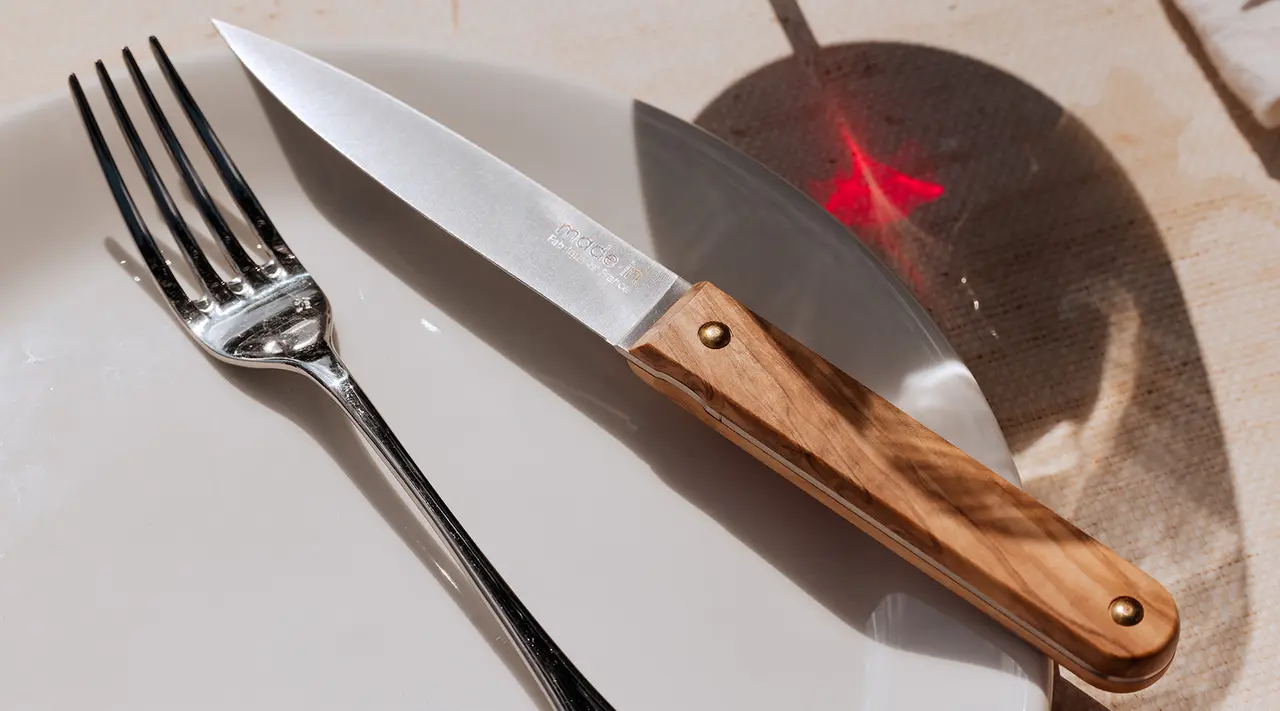
Steak knives vary significantly in terms of style, quality, and price. Here are some of the most important factors to look for when shopping for a set of steak knives.
1. Blade Material and Construction
While your steak knives likely won’t get as much use as your chef knife, they should still be sturdy and long-lasting. Generally speaking, steak knives are made from either stainless steel or carbon steel, both of which make for a strong, durable blade. However, while carbon steel tends to hold an edge longer than stainless, it’s also comparatively brittle, meaning that knives crafted from it chip more easily.
Additionally, a knife that is full tang—meaning that it’s made from a single long piece of metal that extends from the end of the handle through the tip—will often be more balanced and easier to use than a partial tang knife. You can also look for knives that are fully forged, which means that they’re made from a rod of metal that’s been heated and then pounded into the desired blade shape before being tempered. This makes for a stronger knife that holds an edge for longer than a stamped knife, or a knife cut from a single large sheet of metal.
You could also eschew metal steak knives altogether: Ceramic knives, which are made of a material called zirconium oxide, are popular for their ability to maintain a super sharp edge for even longer than a metal chef knife. They’re also lightweight and tend to be fairly affordable. Like carbon steel however, they’re also brittle, making them less desirable and much trickier to sharpen at home. In fact, you’ll probably need to enlist the help of a professional ceramic knife sharpener.
2. Handle Design and Ergonomics
Because steak knives are used for larger, more robust cuts of meat, it’s important to consider its grip. Many knife handles are made out of, or reinforced with, a type of plastic such as polyacetal (POM) or cellulose acetate (a natural plastic). These synthetic materials tend to be cheaper and offer a firmer grip, and are more environmentally friendly than other synthetics. They’re also easier to sanitize, making them a favorite in restaurant kitchens.
If appearance supersedes budget, however, wood-handled steak knives are an elegant choice. Not only are they aesthetically pleasing and a steakhouse favorite, but the natural grain also makes for a comfortable and easy-to-grip handle. Stainless steel handles are another less common option—though they can be a bit slippery and unwieldy by comparison.
Aside from the type of material a handle is made of, another important factor to consider is balance. A full tang, fully-forged steak knife will usually offer better balance and weight distribution than a stamped knife with a partial tang. The presence of a bolster, or a thick junction at the base of the blade near the handle, can add additional balance and stability.
3. Blade Edge and Sharpness
It goes without saying that sharp knives are generally preferable, and a dull blade is the surest way to spoil a good meal. Sharp steak knives are, therefore, essential—after diligently preparing the perfect steak, why would you butcher it right as you’re about to enjoy the fruits of your labor? For optimal cutting performance and longevity, invest in a quality set.
As far as which material to go for, stainless steel will typically be best suited to your needs. Since it’s an alloy (or mix of metals), the quality and strength can vary—so look for those treated with nitrogen (like ours) which maintains the edge without the need for fussy, specialized care. “High carbon steel” blades indicate knives that are strong and stay sharp, but require additional maintenance (like buffing) to remain in good condition.
A straight-edge blade will be easier to sharpen at home than a serrated one. Since you probably won’t be using your steak knives on a daily basis, however, you won’t need to sharpen them very often.
4. Durability and Longevity
Along with how it feels in your hand, another key factor to consider when choosing a steak knife is how long it’s actually going to last. A fully-forged, full tang knife will generally last much longer than a stamped, partial tang knife. Regardless of the steak knives you choose, you still need to take good care of them: Always hand wash and dry them thoroughly before storing, never put your knives in the dishwasher, and store them properly (in an in-drawer organizer, knife block, or the wooden cutlery box they arrived in).
At best, improper maintenance and storage will result in a dull blade. At worst, you’ll have to repair (or get by with) a chipped blade or contend with serious injury. This especially goes for carbon steel knives, which are more susceptible to rust, breakage, corrosion, and dulling.
5. Budget Considerations
Price-wise, steak knives run from incredibly cheap—as little as $20 for a set of 8—to extravagant. Higher end options traditionally come with a wooden, lined box for safe storage, and rest somewhere near fancy silverware and fine china in terms of heirloom value. Those that come with full tang construction will last decades—even lifetimes—with proper maintenance, so we typically recommend spending as much as you can afford to.
Ready to Shop?
Even if you don’t break your steak knives out every day, a nice set is well worth the investment. Not only will cheap knives break more easily, but they’ll be less efficient at the one thing they were designed to do—yield perfect bite-sized slices of tender meat that actually improve the meal rather than diminish it.
Shop our bespoke Steak Knives now for an elegant addition to your next steak night, regardless of the recipe you're following.
